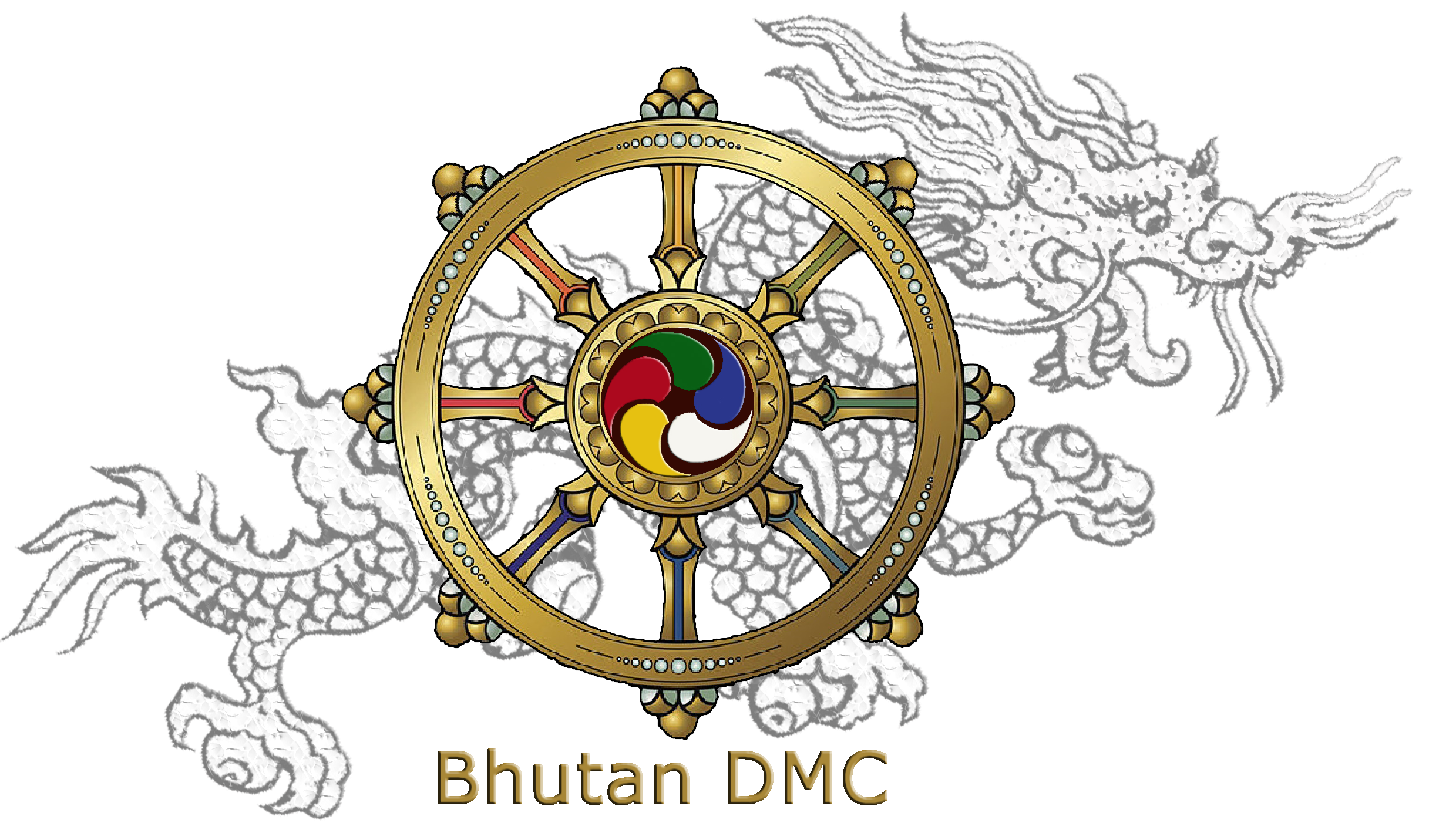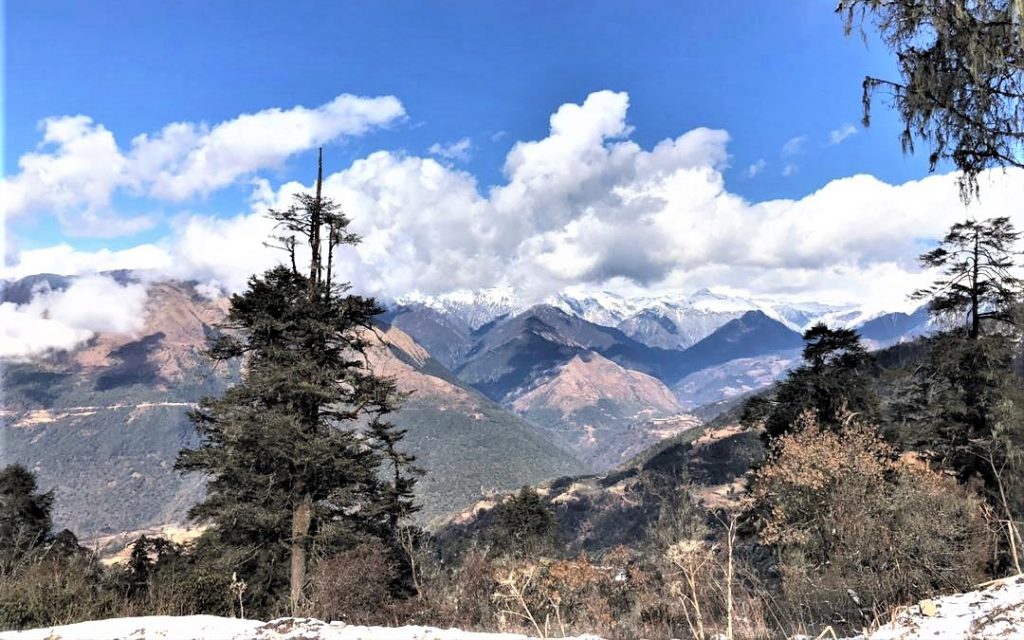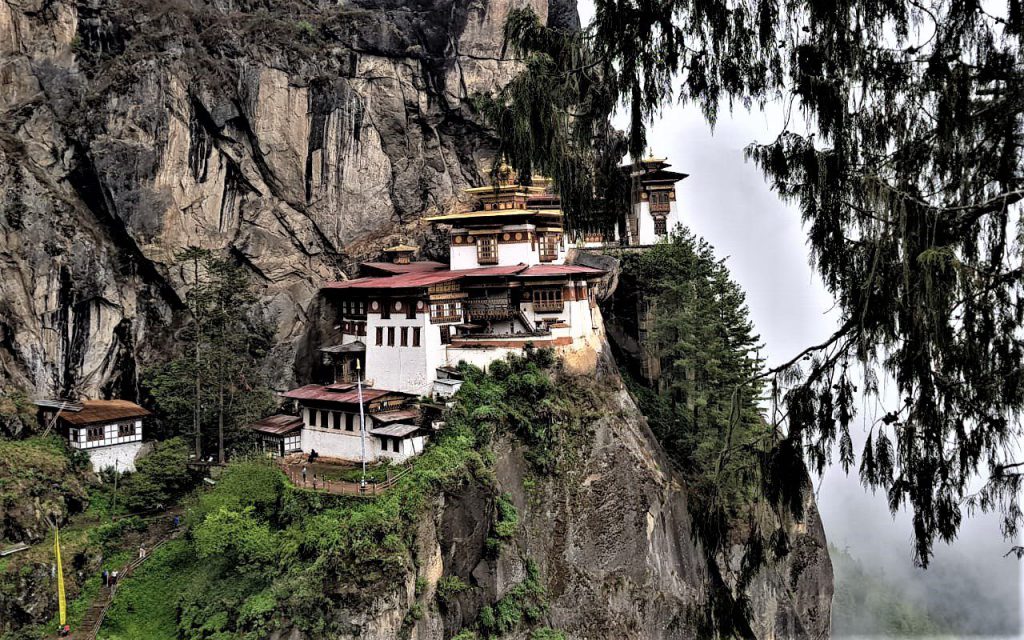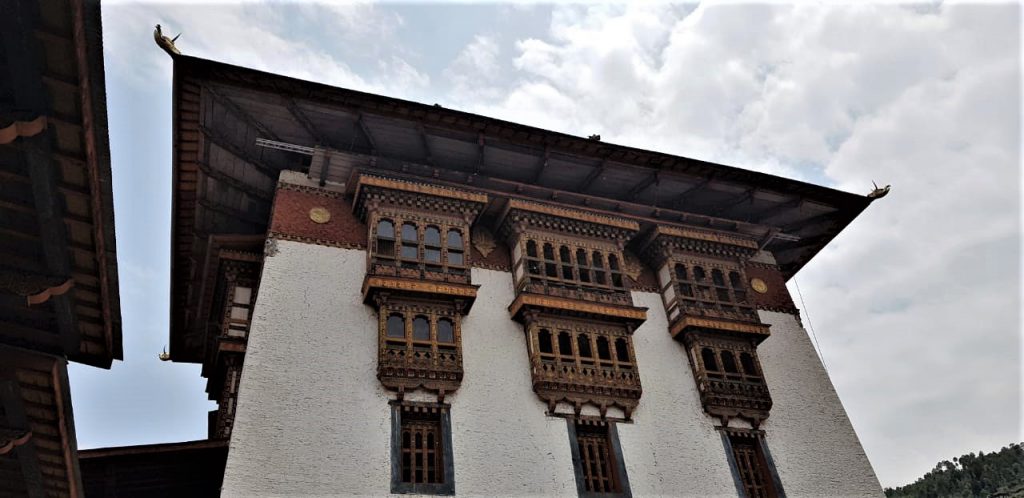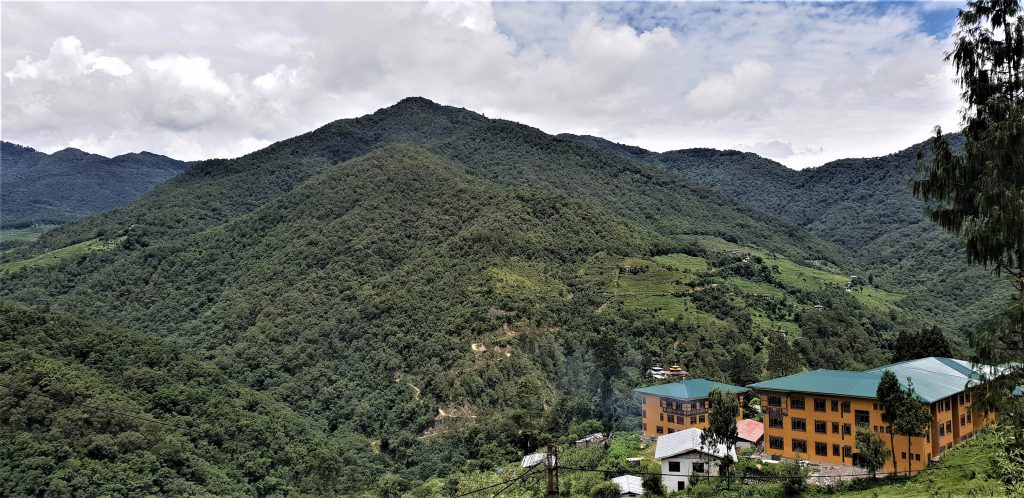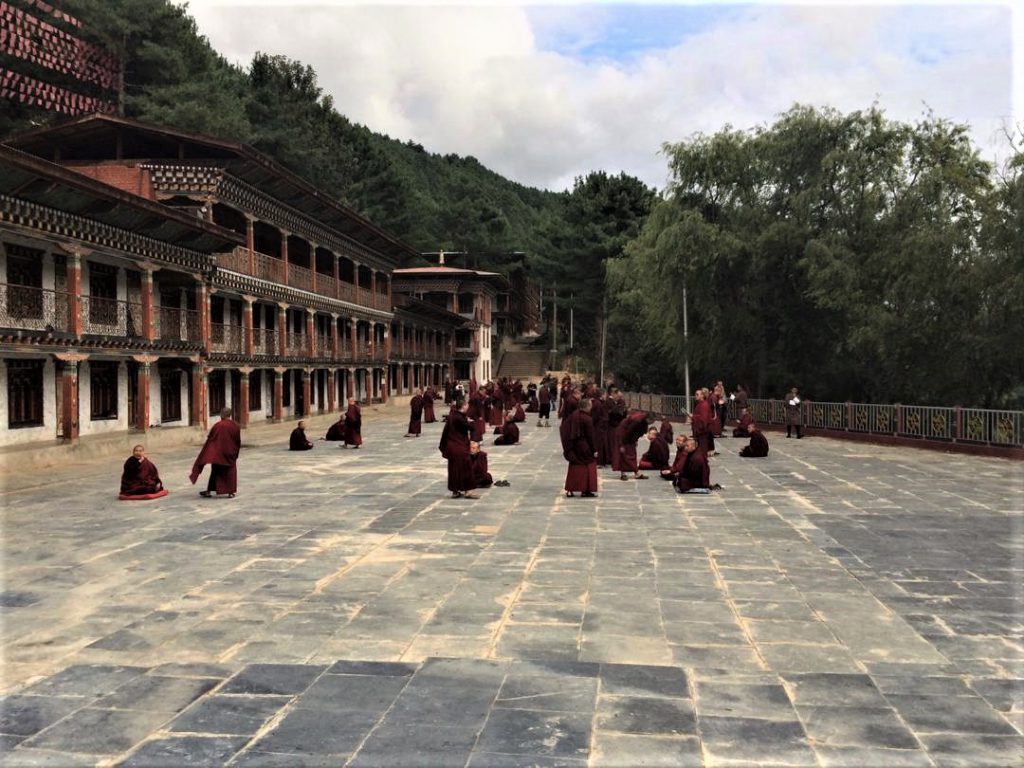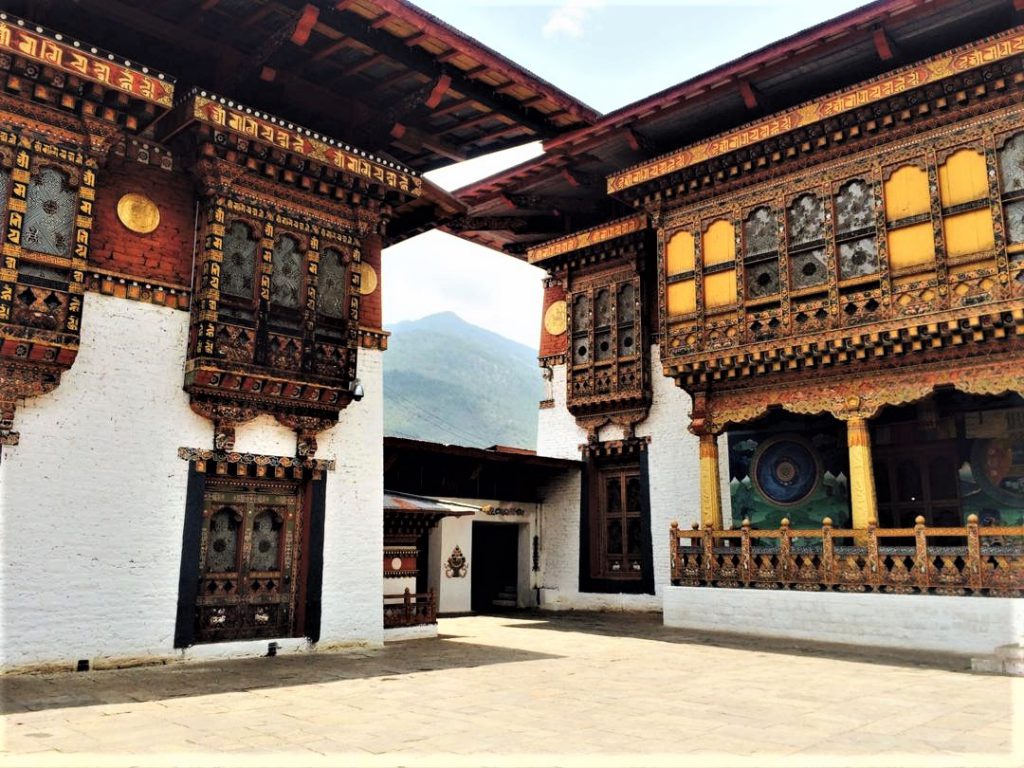Unravel the wonders for yourself of this last Shangri-La – a land of snow-capped mountains, emerald green landscape, sturdy fortresses and gentle people. In Bhutan, tradition is real: The visitors can see it, feel it. In a world where a thick cloak of globalization has all but smothered distinctive heritages, this self-reliant kingdom proudly stands alone. This trip will help you to experience and understand the authentic Bhutanese way of life. Drive from one valley town to another visiting temples, monasteries, dzongs, isolated villages, and the people. The trip is a wonderful immersion into Bhutanese culture, where daily life is itself a form of art. An ultimate vacation in this mythical Himalayan Kingdom!
Day 1
Arrive Paro by Flight & Transfer to Thimphu (55km, approx. 1.1/2-hour drive)
The flight to Paro is one of the most spectacular in entire Himalayas. Flying along the Himalayan range from Kathmandu or over Himalayan foothills, the journey offers fascinating views and an exciting descent into the Kingdom. Bhutan’s first gift to you as you disembark from the aircraft will be cool, clean fresh mountain air. After immigration formalities and baggage collection, you will be met by our representative, and afterwards drive to Thimphu, the capital town of Bhutan with en-route stop at Chuzom, the confluence of Thimphu and Paro rivers. Three different style of stupas; Tibetan, Nepalese and Bhutanese adorn this confluence. Shortly before reaching Chuzom, you will see on your left Tamchog Lhakhang, ‘the temple of the excellent horse’. It is a private temple, built in 15th century, as the result of visitation from Balaha, the excellent horse, a manifestation of Chenrezig, the compassionate Buddha.
On arrival, in Thimphu check-into the hotel. The capital town of Bhutan and the centre of government, religion and commerce, Thimphu is a unique city with unusual mixture of modern development alongside ancient traditions. With the population of about 1,00,000 it is perhaps still the world’s only capital city without a traffic light.
Evening an exploratory walk around Thimphu main street and market area.
Overnight at the hotel in Thimphu. (Altitude 2,320m)
Day 2
Thimphu
After breakfast, sightseeing in Thimphu valley including visit to the following: the National Library, housing an extensive collection of priceless Buddhist manuscripts; the Institute for Zorig Chusum (commonly known as the Painting School) where students undergo a 6-year training course in Bhutan’s 13 traditional arts and crafts. Later visit Textile and Simply Bhutan Museums, a fascinating testimony of the Bhutanese material culture and living traditions.
After lunch, visit King’s Memorial Chorten continuously circumambulated by people, murmuring mantras and spinning their prayer wheels. Construction of this landmark was the idea of Bhutan’s third king, His Majesty Jigme Dorji Wangchuk (“the father of modern Bhutan”) who has wished to erect monument to world peace and prosperity. Completed in 1974 after his untimely death, it serves both as a memorial to the Late King and as a monument to peace.
Later drive to Buddha Point (Kuensel Phodrang). You can pay your obeisance and offer prayers to the Buddha, the largest statue in the country and then walk around and take a glimpse of the valley.
Then drive to visit Trashichhoedzong, ‘fortress of the glorious religion’. This is the center of government and religion, site of monarch’s throne room and seat of Je Khenpo or Chief Abbot. Built in 1641 by the political and religious unifier of Bhutan, Shabdrung Ngawang Namgyal, it was reconstructed in 1960s in traditional Bhutanese manner, without nails or architectural plans.
Evening can be spent strolling through the government-run Handicrafts Emporium and local crafts bazaar, to browse through example of Bhutan’s fine traditional arts. Here you can buy hand-woven textiles, thangkha paintings, masks, ceramics, slate and wood carvings, jewelry, interesting items made from local materials.
Overnight at the hotel in Thimphu. (Altitude 2,320m)
Day 3
Thimphu – Trongsa (200 Km, approx. 5-hour drive)
After early breakfast, drive to Dochula pass (3,080m). If the weather permits, you can see a range of high Himalayan peaks towards the north east. Following peaks can be seen from this pass, on a clear day ; Masagang (7,158m), Tsendagang (6,960m), Terigang (7,060m ), Jejegangphugang (7,158 m ), Kangphugang (7,170 m ), Zongphugang (7, 060 m ), a table mountain that dominates the isolated region of Lunana – finally Gangkar puensum, the highest peak in Bhutan at 7,497m.
Further drive onwards arriving Wangduephodrang valley. The descent from Dochula into Wangduephodrang valley is quite long as the altitude difference is 1700 meters.
Then proceed to Trongsa across Pelela pass (3,300 m), the traditional boundary between east and west. The pass is marked by a large prayer flag and the ground is covered with high altitude dwarf bamboo. Stop enroute at Chendbji Chorten, which was built in 18th century by a Lama named Shida, it is Nepalese in style with eyes painted at four cardinal points.
Afternoon visit Trongsa Dzong built in 1648 it was the seat of power over central and eastern Bhutan. Both the first and second Kings of Bhutan ruled the country from this ancient seat.
Overnight at the hotel in Trongsa. (Altitude 2,310m)
Day 4
Trongsa – Bumthang (68 Km, approx. 2.1/2-hour drive)
Morning after breakfast, visit Ta Dzong. This Dzong, a cylindrical stone structure rising five stories, was built in 1652 by Chogyal Minjur Tempa. After more than 350 years, it has been resurrected into a classy museum, that represents a tasteful blend of tradition and modernity.
After sightseeing at Tronga, continue drive to Bumthang across Yutong-la pass (3,400m/ 11,155 ft). The road winds steeply up to the pass from Trongsa, then runs down through coniferous forest into a wide, open cultivated valley known as the Chumey valley.
En route stop at Chumey, a wide fertile valley where wheat, barley, potatoes and buckwheat are cultivated. Chumey is particurly known for its famous wool weaving called ‘Bumthang Yathra’.
Afternoon a special visit to Lhodrak Kharchhu Monastery:
Located above the main town, about 3 km from Chamkhar town, the monastery was founded by Namkhai Nyingpo Rinpoche in 1984 who was recognized at a very young age by H.H. the 14th Dalai Lama and H.H. 16th Karmapa as the reincarnation of a Tibetan lama. The monastery has become part of an extensive effort to preserve and revitalize Tibetan culture. The monks regular curriculum include reading, memorizing the daily prayers, learning dharma dances, drawing mandalas, learning the melodies of sacred rituals, learning the use of ceremonial instruments and the art of making sacrificial objects, grammer, poerty, karika along with the basics of contemplation and instruction on the different stages of tantra.
Overnight at hotel in Bumthang. (Altitude 2,600m)
Day 5
Bumthang
Bumthang is the general name given to combination of four valleys – Chumey, Choekhor, Tang and Ura with altitude varying from 2,600m to 4,000m. It is home to many of prominent Buddhist temples and monasteries.
After breakfast, excursion to Ura valley. Jakar to Ura is 48 km, about one-and-a-half-hour drive. To reach here, the road climbs to amazingly open countryside, only occasionally running into forest. Large sheep pastures line the road up to 20 km behind the southern tip of the Tang valley. The route crosses Ura la pass (3,600m) with a magnificent view of Mount. Gangkhar Puensum. Villages in Ura have clustered houses, which is quite unusual in Bhutan. Above Ura village (3,100m) is a new temple dedicated to Guru Rinpoche. Inaugurated in 1986, it contains a huge statue of the master and remarkable paintings of the cycle of his teachings.
Afternoon visit Jambey Lhakhang. This monastery was built in the 7th century by Tibetan King, Songtsen Gampo. It is one of the 108 monasteries built by him to subdue evil spirits in the Himalayan region. Its present architectural appearance dates from the early 20th century.
Then visit to Kurje Lhakhang, consisting of three temples. The one on the right was built in 1652 on the rack face where Guru meditated in the 8th century. Second temple is built on the site of a cave containing a rock with the imprint of Guru’s body and is therefore considered the most holy. The third temple was built in 1990s by Ashi Kesang, the Queen Mother. These three temples are surrounded by a 108 chorten wall.
Afterwards visit to Jakar Dzong. Founded by great grandfather of the first Shabdrung, the Dzong was initially built as a monastery in 1549. It was upgraded after the Shabdrung had firmly established his power in 1646. The Dzong is now used as administrative centre for Bumthang valley and houses the regional monk body.
As the time permits, visit Tamshing Lhakhang, the temple founded in 1501 by Terton Pema Lingpa, the re-incarnation of Guru Padsambhava. The monastery has very ancient religious paintings like 1,000 Buddhas and 21 Taras (female form of Buddhistava). The temple was restored at the end of the 19th century.
Overnight at hotel in Bumthang. (Altitude 2600m)
Day 6
Bumthang – Gangtey (Phobjikha) (153km, approx. 5.1/2-hour drive)
After breakfast embark on a fascinating journey to Gangtey. The valley of Gangtey is one of the most beautiful spots in Bhutan. The surprise of finding such a wide, flat valley without any trees after the hard climb through dense forests is augmented by an impression of vast space, and extremely rare experience in Bhutan where most of the valleys are tightly enclosed.
Afternoon visit Gangtey Goempa. Perched on a small hill that rises from the valley floor, the Gangtey Monastery is the only Nyingmapa monastery on the western side of the Black Mountain’s and also the biggest Nyingmapa monastery in Bhutan. The Monastery is surrounded by a large village inhabited mainly by the families of the 140 Gomchens who take care of the Monastery.
Later explore Gangtey village and Phobjikha valley.
Overnight at the hotel in Gangtey. (Altitude 3,000m)
Day 7
Gangtey – Punakha (85km, approx. 3-hour drive)
After breakfast, explore fascinating Phobjikha valley. This place is the winter home of black necked cranes that migrate from the arid plains in the north to pass winter winter in milder and lower climate. Phobjikha, at an altitude of 2900 m, falls under the district of Wangduephodrang and lies on the periphery of the Black Mountain National Park. The valley boasts two beautiful meandering rivers, Nakay Chhu (Chhu Naap-black water) and Gay Chhu (Chhu Karp-white water).
Also visit Black Necked Crane Information Centre. Situated on the edge of the forest and wetland along the main road of Phobjikha valley, the black-necked crane information Centre has an observation room equipped with high power telescope and spotting scopes for catching the best view of the cranes. The centre also offers display information that outline the natural and cultural history of the area. There is a small gift shop, which sells handicrafts produced by the local people.
Afterwards drive to Punakha, the ancient capital town of Bhutan.
Afternoon, proceed to visit Punakha Dzong or (Palace of Great Happiness), built at the junction of the Phochu and Mochu rivers in 1637 by Shabdrung Ngawang Namgyal. This majesticdzong served as both the religious and the administrative center of Bhutan in the past. It measures some 600 by 240 feet and has a six-story, gold-domed tower. Inside are courtyards and religious statuary that hint at the depth of history and spiritual tradition embodied here. Your guide will illuminate your understanding of this intricate culture that is exotic to us, though long established here.
Later in evening if time permit excursion to Chimi Lhakhang.
The Chimi Lhakhang, situated on a hillock in the centre of the valley, also known as the temple of fertility. It is widely believed that couples who do not have children and wanting one, if they pray at this temple, they are usually blessed with a child very soon. The trail leads across rice fields to the tiny settlement of Pana, meaning ‘field’. A walk through the village near the temple will give you rare glimpses into the daily life and lifestyle of the villagers
Overnight at the hotel in Punakha. (Altitude 1,300m)
Day 8
Punakha – Paro (125 kms, approx. 4-hour drive)
After breakfast drive back to Paro descending back down from Dochu La, follow the way back up the dramatic Wang Chhu and Paro Chhu river valleys, before crossing through Paro Town towards the north end of the valley.
En route visit Simtokha Dzong, the place of profound tantric teaching, this dzong now houses a school for the study of the Dzongkha language.
Later in the day after checking into hotel, proceed to visit Ta Dzong, originally built as Watchtower, which now houses National Museum. The extensive collection includes antique thangkha paintings, textiles, weapons & armour, household objects and a rich assortment of natural and historic artifacts.
Then walk down the trail to visit Rinpung Dzong, meaning (“fortress of the heap of jewels”), which has a long and fascinating history. Along the wooden galleries lining the inner courtyard are fine wall paintings illustrating Buddhist lore such as four friends, the old man of long life, the wheel of life, scenes from the life of Milarepa, Mount. Sumeru and other cosmic Mandala.
Overnight at the hotel in Paro. (Altitude 2,280m)
Day 9
Paro
After breakfast excursion to Taktshang Monastery (approx. 5 hours walk). It is one of the most famous of Bhutan’s monasteries, perched on the side of a cliff 900m above the Paro valley floor. It is said that Guru Rinpoche arrived here on the back of a tigress and meditated at this monastery and hence it is called ‘Tiger’s Nest’. This site has been recognised as a most sacred place and visited by Shabdrung Ngawang Namgyal in 1646 and now visited by all Bhutanese at least once in their lifetime.
On the way back to town stop at the base of Drukgyel Dzong, a ruined fortress where Bhutanese warriors fought Tibetan invaders centuries ago. The snowy dome of sacred Chomolhari, “mountain of goddess” can be seen in all her glory from the approach road to the Dzong.
Later visit the 7th century Kyichu Lhakhang, one of the 108 temples built in the Himalayas by Tibetan King, Songtsen Gampo. The building of this temple marks the introduction of Buddhism in Bhutan.
Evening an exploratory walk around main street and market area.
Overnight at the hotel in Paro. (Altitude 2,280m)
Day 10
Depart Paro
After early breakfast at the hotel, drive to the airport for flight to your onward destination. Our representative will help you with exit formalities and then bid you farewell.
Image Gallery
